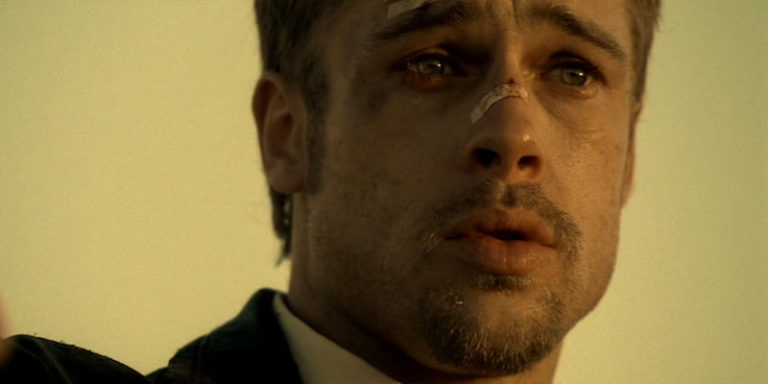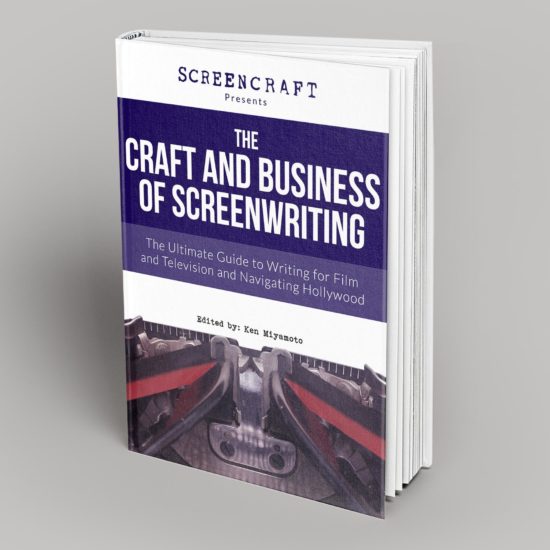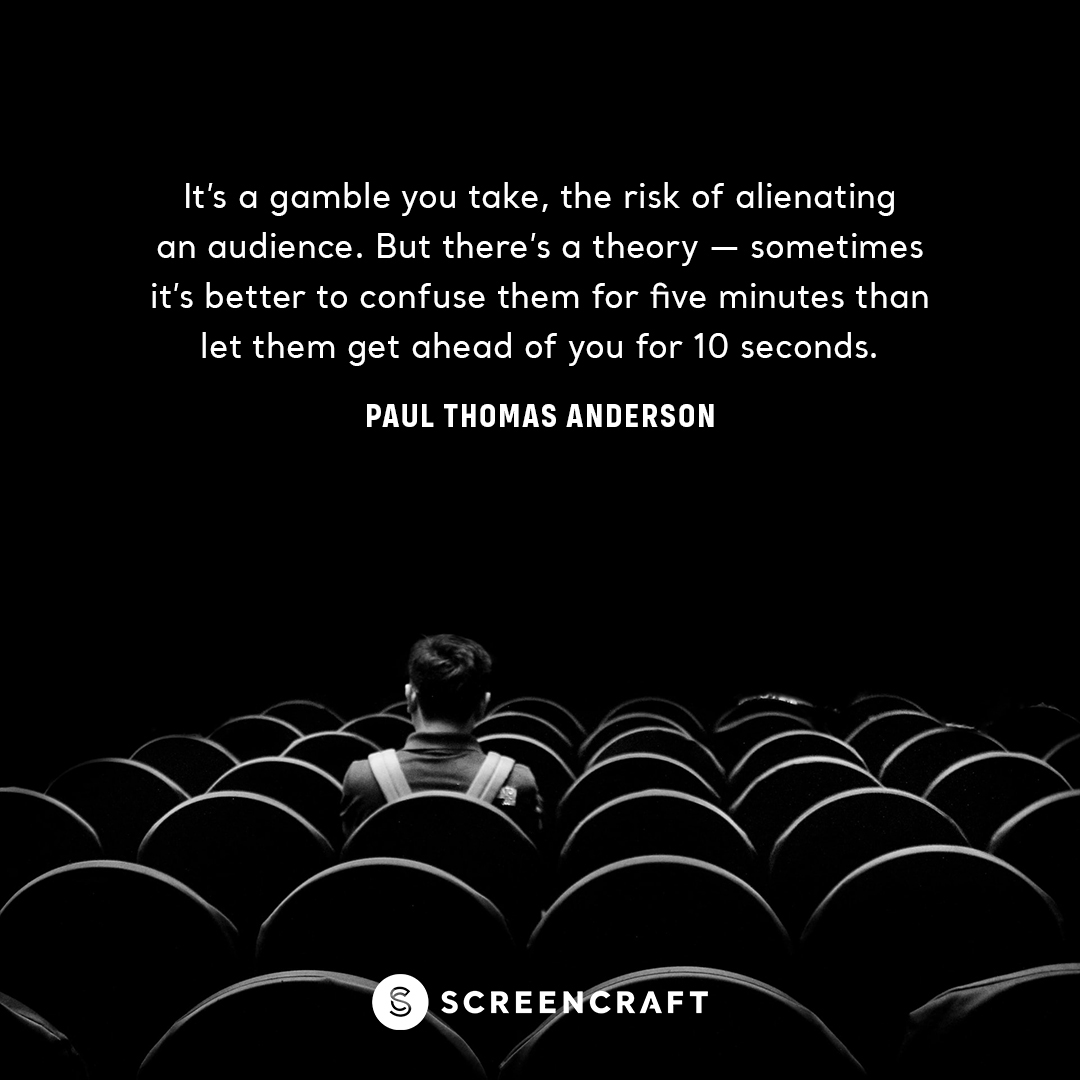How to Use Aristotle's Favorite Plot Tool — Peripeteia

What is Peripeteia, and what does it have to do with twist endings in your screenplays?
Among many talents, Greek philosopher and scientist Aristotle was a master analyst of tragedy and epic storytelling.
Read ScreenCraft's Aristotle’s Six Golden Rules Of Screenwriting!
In his book Poetics, he defines Peripeteia as a change by which the action veers round to its opposite, subject always to our rule of probability or necessity.
It's a literary device that showcases a sudden change in the story that results in negative circumstances. Just when we think the protagonist of the story has or is about to make a positive turn in their arc, something bad happens — a reversal of fortune. And when that fortune changes from good to bad, we're witnessing peripeteia within the story.
Peripeteia Is the Most Powerful Plot Tool
Aristotle believed that peripeteia was the single and most powerful element of a tragedy — where you shock the audience with that reversal of fortune from good to immediate bad through a revelation or action.
Most stories go through the motions of plotting a series of events, followed by the resulting actions and reactions of the protagonist — all of which lead to a conclusion of a story.
But when you utilize peripeteia within your story, you're rocking the world you've created and you're putting your characters through surprising, shocking, and gut-wrenching turmoil. And because the reader or audience live vicariously through your characters, you're rocking their world as well. And that creates a visceral reaction that is long remembered.
Read ScreenCraft's Do You Know the Two Types of Plots, According to Aristotle?
Peripeteia Creates the Most Important Reaction in Film and Television
It causes fear and pity within the audience's minds, pulling their heartstrings and creating a cathartic reaction. And catharsis is the most vital reaction that writers want their reader or audience to experience because it creates a lasting impression.
The word catharsis is derived from the Greek word katharsis — meaning purification or cleansing. It refers to the purging or purification of the emotions through the evocation of pity and fear — often attributed to tragedy.
Aristotle said, "Tragedy is an imitation of an action that is serious, complete, and of a certain magnitude… through pity [eleos] and fear [phobos] effecting the proper purgation [catharsis] of these emotions."
Today, we can translate catharsis as the feeling we feel after the resolution of the story and the protagonist’s overall journey.
And often the catharsis readers and audiences feel has very little — or nothing — to do with their personal experiences. Sometimes the script is so well written that they somehow felt placed within the shoes of the protagonist and felt their own catharsis by the end of the movie.
Any script or film can tell a good story with an interesting plot and some compelling characters. But not every script or film can truly leave a lasting mark on that reader or that audience.
As a writer, when you bring your protagonist through endless conflict — as you always should throughout your first and second acts — it's highly effective to make the audience think that the protagonist has overcome the odds stacked against them and has finally succeeded, only to pull the rug from under them with a negative reversal of fortune.
That's how you create a cathartic reaction to your work. And that is why Aristotle believed so much in utilizing peripeteia as the ultimate plot tool.
Peripeteia is the True Turning Point of Your Story
It can be found throughout your whole story within the first and second acts, but it's most useful at either the closing of the second act and beginning of the third act or as the final twist ending during or after the climax – it depends on what type of story you want to tell.
Since peripeteia turns everything on its head within the story, you can use it as a major shift into a higher gear of storytelling going into the third act. This offers you the perfect segue into the climax of your story, leading to a thrilling and dramatic end.
The other option is using it in the final moments of your story, shocking the reader or audience and leaving them with that shock as they close the script or walk out of the theater. This type of peripeteia is more utilized in tragedies, which end on a negative note for the protagonist, but it's effective nonetheless.
Regardless, know that this negative reversal of fortune is the true turning point of your story.
Examples of Peripeteia in Film
Here we share a few examples of cinematic peripeteia so that you can get an idea of the context of this brilliant and powerful plot tool.
Beware of Spoilers!
The Empire Strikes Back
This film is a tragedy. While it ends with Luke and his friends escaping the grasps of Darth Vader and the Empire, they've lost their friend Han Solo to the clutches of Bounty Hunter Boba Fett. However, the most cathartic revelation is Vader divulging the truth that he is Luke's father. It's earth-shattering to Luke. And even moments before, just when we've seen that he can hold his own against Vader in a lightsaber duel, Vader cuts off his hand, rendering him weaponless.
It's a crucial reversal of fortune.
Indiana Jones and the Last Crusade
This is a perfect example of using peripeteia towards the end of the second act. Indy learns that Elsa has betrayed him. This shatters Indy's heart, and his father's Grail diary is lost to the Nazis. There's still plenty of story left in the remainder of the second act, then leading into the third act, but it's a true turn of events and twist that offers a memorable response.
The Usual Suspects
We believe that we've finally discovered the truth of what happened. Verbal breaks down in an emotional moment — leading the detective into believing that he's cracked the case. But then, peripeteia takes hold and we're left with a shocking reveal.
Memento
Memento actually has a couple of examples of peripeteia, thanks to its unique reverse story structure. The above scene is the first, where we learn the tragic truth that Leonard has actually already killed the real man who murdered his wife — but because of his condition, he can't remember the satisfaction of avenging his wife. We further learn that Teddy has been helping Leonard create new mysteries to solve by having him go after other men. This gives Leonard purpose in life.
But when Leonard discovers this, his reaction is to continue his purpose. He wants to do his future self a favor by giving him the satisfaction of killing what he believes is his wife's killer. So he chooses to trick his future self into thinking that Teddy is the killer.
Peripeteia doesn't always have to be a single climax or twist. You can elevate your story and characterization by offering multiple examples of it.
Se7en
We think that John Doe is leading them to his final two victims, which is to be followed by a confession of his crimes. However, there is a tragic element of peripeteia waiting for them — a shocking twist ending that defines tragedy.
Peripeteia is the most effective plot tool that writers can use in their work, primarily because it invokes such a powerful response from the reader or audience.
Now Read ScreenCraft's 7 Ways to Master the Endings of Your Screenplays!
Ken Miyamoto has worked in the film industry for nearly two decades, most notably as a studio liaison for Sony Studios and then as a script reader and story analyst for Sony Pictures.
He has many studio meetings under his belt as a produced screenwriter, meeting with the likes of Sony, Dreamworks, Universal, Disney, Warner Brothers, as well as many production and management companies. He has had a previous development deal with Lionsgate, as well as multiple writing assignments, including the produced miniseries Blackout, starring Anne Heche, Sean Patrick Flanery, Billy Zane, James Brolin, Haylie Duff, Brian Bloom, Eric La Salle, and Bruce Boxleitner. Follow Ken on Twitter @KenMovies
For all the latest ScreenCraft news and updates, follow us on Twitter, Facebook, and Instagram.
Tags
Get Our Screenwriting Newsletter!
Get weekly writing inspiration delivered to your inbox - including industry news, popular articles, and more!




























